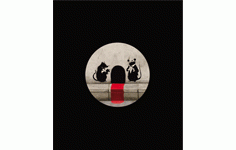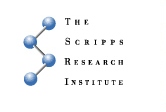RAT TRAP
source: http://www.walrusmagazine.com, 15 november 2007
Why Canada’s Drug Policy Won’t Check Addiction.
“Canada’s anti-drug strategy a failure, study suggests,” read the headline of a brief cbc story that circulated through a handful of news outlets before dying out early this year. The British Columbia Centre for Excellence in hiv/aids had just published a paper revealing that almost three-quarters of the $368 million allocated to Canada’s Drug Strategy in 2004 2005 was spent on enforcement initiatives aimed at staunching the supply of drugs. The authors pointed out that despite this war on drugs, the rate of consumption was higher than ever: in 2002, 45 percent of Canadians reported having used illicit drugs in their lives, up from 28.5 percent in 1994.
The study advocated that money be directed toward cost-effective, evidence-based prevention, treatment, and harm-reduction programs — the other three pillars of Canada’s drug policy. But to Bruce Alexander, a psychologist who recently retired after thirty-five years at Simon Fraser University in British Columbia, the policy debate is just a distraction. “There’s no drug policy that will have much effect on addiction,” he says from his home in Vancouver. “I think that’s one of our diversions: ‘If we could just get the drug policy right, we’d solve our addiction problem.’ I don’t think that would touch it. The only way we’ll ever touch the problem of addiction is by developing and fostering viable culture.”
Alexander has been delivering this message since the late 1970s, when he ran a series of elegant experiments he calls Rat Park, which led him to conclude that drugs — even such hard drugs as heroin and cocaine — do not cause addiction; the user’s environment does. It was a stunning result, one that should have had a seismic effect on drug policy. But, like the report on Canada’s failed drug strategy, Alexander’s research was largely ignored.
When Richard Nixon launched the War on Drugs in the early 1970s, it was generally believed, as it is today, that drugs cause addiction as surely as lightning causes thunder. At that time, Bruce Alexander was counselling addicts in Vancouver’s infamous Downtown Eastside, and he wasn’t so sure. “Junkies say things like ‘I can go through the withdrawal, and I can stop, but I don’t want to stop,'” Alexander says. “We’re not supposed to believe it; we’re supposed to say they’re denying that they’re in the grip of this drug, but they’re not, really. I believed them.”
His suspicions carried little weight in the classroom, however, where students were armed with a powerful trump card: the famous Skinner box experiments of the 1950s and ’60s. A Skinner box is a cage equipped to condition an animal’s behaviour through reward or punishment. In a typical drug test, a surgically implanted catheter is hooked up to a drug supply that the animal self-administers by pressing a lever. Hundreds of trials showed that lab animals readily became slaves to such drugs as heroin, cocaine, and amphetamines. “They were said to prove that these kinds of dope are irresistible, and that’s it, that’s the end of the addiction story right there,” Alexander says. After one particularly fruitless seminar in 1976, he decided to run his own tests.
The problem with the Skinner box experiments, Alexander and his co-researchers suspected, was the box itself. To test that hypothesis, Alexander built an Eden for rats. Rat Park was a plywood enclosure the size of 200 standard cages. There were cedar shavings, boxes, tin cans for hiding and nesting, poles for climbing, and plenty of food. Most important, because rats live in colonies, Rat Park housed sixteen to twenty animals of both sexes.
Rats in Rat Park and control animals in standard laboratory cages had access to two water bottles, one filled with plain water and the other with morphine-laced water. The denizens of Rat Park overwhelmingly preferred plain water to morphine (the test produced statistical confidence levels of over 99.9 percent). Even when Alexander tried to seduce his rats by sweetening the morphine, the ones in Rat Park drank far less than the ones in cages. Only when he added naloxone, which eliminates morphine’s narcotic effects, did the rats in Rat Park start drinking from the water-sugar-morphine bottle. They wanted the sweet water, but not if it made them high.
In a variation he calls “Kicking the Habit,” Alexander gave rats in both environments nothing but morphine-laced water for fifty-seven days, until they were physically dependent on the drug. But as soon as they had a choice between plain water and morphine, the animals in Rat Park switched to plain water more often than the caged rats did, voluntarily putting themselves through the discomfort of withdrawal to do so.
Rat Park showed that a rat’s environment, not the availability of drugs, leads to dependence. In a normal setting, a narcotic is an impediment to what rats typically do: fight, play, forage, mate. But a caged rat can’t do those things. It’s no surprise that a distressed animal with access to narcotics would use them to seek relief.
Rat Park overtrumped the Skinner box trump card. “You could no longer say with a straight face that rats find certain drugs irresistible,” Alexander says. He was disappointed, then, when, his work was rejected by both Science and Nature, two of the world’s most prestigious scientific journals (even though both reject over 90 percent of submissions). Peer reviewers didn’t fault the methodology; their objection, recalled study co-author Barry Beyerstein, amounted to “I can’t put my finger on what’s wrong, but I know it’s got to be wrong.” Ultimately, the Rat Park papers were published in reputable psychopharmacology journals, “but not ones that reached the public,” Alexander says.
Then, three years into the project, the university’s seed money dried up. Alexander didn’t bother applying for external grants. The near-hysteria about the addictiveness of drugs at that time (“It’s so good, don’t even try it once”) meant funding was reserved for scientists looking for neurochemical, not social, causes and medical, not social, cures. “Our system of science is of course objective on certain levels, it genuinely is, but on the funding level it is highly ideologically directed,” Alexander says. He shut down Rat Park.
“I’m glad they took away my rats,” Alexander says now, his tone never rising above bemusement. “A hundred years from now, people are going to look back on the addiction science of the beginning of the twenty-first century, and they’re going to see that nine-tenths of it was done on rats, and they’re just going to laugh and laugh.”
It’s not what you’d expect to hear from the father of Rat Park. But Alexander’s experiment tells us about rat behaviour, not human behaviour. That’s why he’s spent the past two decades looking for evidence that drug-induced addiction in humans is also a myth.
Unable to secure funding, Alexander conducted most of his research in the library, where he gathered a mountain of evidence. A survey of Ontario households in 1987, for example, suggested that 95 percent of those who had ever tried cocaine were using it less than once a month. A 1990 survey conducted in the US found that crack cocaine, “the most addictive drug on earth,” was addicting only one user in a hundred. “Naturally, because scholars are scrupulous, I’ve had to try it [morphine] myself,” Alexander says. “It’s no big deal. You’re visibly lightened of pain and anxiety, and that’s mildly pleasant.” But he didn’t experience any urge to try it again. “I just wasn’t interested, and that’s the typical response.”
Then there are the thousands of American soldiers who became heroin addicts during the Vietnam War. In an unrivalled demonstration of the effect of setting, a 1975 survey found that 88 percent of them simply stopped using the drug when they left the war zone. Their experience has been recreated by millions of hospital patients who have received (and become physically dependent on) morphine for severe pain. If opioids are all they’re reputed to be, this practice should have produced legions of addicts. Instead, as researchers have discovered, once patients are no longer in physical distress, they can’t wait to quit the drug, go through the withdrawal period, and get on with their lives. It’s Rat Park’s “Kicking the Habit” experiment carried out on humans, with the same result.
Convincing as these studies are, they remain the outliers of addiction research, which now more than ever endorses neurochemical models, thanks to exquisite new machines that decode genomes and map working brains. “There’s a mainstream that has all the money, sponsored primarily by the American government,” Alexander says. “Those researchers truly believe that they’re dealing with a brain disease, and that they will discover the pill that will solve the problem.”
But if biology alone explained addiction, rates wouldn’t change. A certain fraction of any population would fall predictably into the jaws of addiction, as predestined by flaws in their molecules. Instead, Alexander’s research reveals that addiction rates are low when societies are stable, and they rise at times of social disruption. “The extreme case is the aboriginal people,” he says. “You don’t have anything identifiable as addiction until you screw up their culture, and then alcoholism becomes a major problem. In extreme cases, addiction rates can go from zero to close to 100 percent.”
Such spikes suggest that environment is a stronger determinant of addiction than chemistry. As Alexander puts it, if you put a carton of eggs under a hydraulic press, it’s true some of the eggs will crack before others, but the problem isn’t the eggs. It’s the press.
The years since Rat Park have turned Bruce Alexander into an activist. He’s written books and papers, delivered speeches, and testified before the 2001 2002 Senate Special Committee on Illegal Drugs (which produced a single report recommending the decriminalization of certain aspects of medical marijuana production and use). His message — that the core values of Western life have created an environment of rootlessness and spiritual poverty that leads more and more of us to addiction — is Rat Park writ large. And by addiction, Alexander means a great deal more than illegal drugs. There are the legal drugs, alcohol and tobacco, of course. Then there’s gambling, work, shopping, the Internet, and anorexia (“addiction to starvation,” as Alexander puts it). Research is showing that as far as the brain is concerned, these activities are drugs, too, raising levels of the neurotransmitter dopamine, just like alcohol, heroin, and almost every other addictive substance we know. In this broad — but not loose — sense of the word, addiction is not the preserve of a coterie of social outcasts, but rather the general condition of Western society.
Naturally, these indictments have not for the most part been warmly received, but Alexander is used to that. For years, he’s worked outside the mainstream, without funding, in the face of professional ridicule. The resistance, he says, is based on a pervasive “temperance mentality” that has made drugs — first alcohol, then opium, morphine, cocaine, heroin, and marijuana — the scapegoat for society’s ills for centuries. “We’re bathed in this propaganda from childhood, and it’s totally persuasive,” he says. “It’s so much easier to believe that the drug takes people away than that the very civilization we live in is making life miserable for everybody.”




 Creative Commons Attribution
Creative Commons Attribution